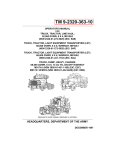Download reach ii caregiver network
Transcript
REACH CAREGIVER NETWORK THE COMPUTER TELEPHONE INTEGRATION SYSTEM (CTIS) Overview of the REACH Caregiver Network The REACH Caregiver Network is an integral component of the intervention. The intent of the network is to enhance communication, access to information and resources, and support. The network will also provide a mechanism to maintain the continuity of treatment gains after the intervention sessions as it provides a structure for reinforcement of strategies/skills introduced in the sessions and continued access to information, services, and support. The network is intended for use by both caregivers and interventionists. With respect to the caregivers, the network will provide: 1) access to resources; 2) social support; 3) information/educational material, and 4) respite. The interventionist will use the network to: 1) send reminders/messages; 2) deliver the intervention; 3) reinforce the information/strategies introduced in the intervention; and 4) information/referral. The network involves the use of the computer integrated telephone system (CTIS) that marries computer and telephone technology (screen phones). Available features are presented in menus in a hierarchal fashion (menus are linked to submenus). Menu options are selected using the numeric keypad on the screenphone. Users are guided through menus with visual and voice prompts. The menu screens for the caregiver and the interventionist are provided in the Appendix. Spanish versions of the caregiver menus are also provided. Description of the CTIS System The CTIS is an information network based on computer-telephone technology that consists of a general purpose computer equipped with a CTIS line interface, digitization, and conferencing hardware and specially designed software. The CTIS system integrates telephone and computer technology to deliver voice and text information to the end user through standard POTS (Plain Old Telephone System) lines. The essential components of the system include a base computer (consisting of telephony and conferencing hardware and software) and screenphones at the end users premise. The system allows users to send and receive messages, place and receive calls, leave and get reminders, and conference with multiple persons. In addition, users will be able to access various resources such as contacting agencies and accessing useful information. The base system will reside at the University of Miami School of Medicine where a Pentium IV computer with an Intel Dialogic D/82JCT-U PBX integration board will be used to interface with a Siemens HICOM 300E switch (PBX). The system will operate on software developed in Visual Basic 6.0 (using Parity Software’s CT-ADE toolkit) to run on Microsoft Windows 2000. System databases will be maintained in Access 2000. Users will be able to access the system by dialing in on a 800 line and using an access code (5 digit PIN). The D/82 board will allow for simultaneous access to 8 incoming lines. Outgoing calls and conferences will be handled through the PBX. A back-up system will also be maintained. Users will interact with the base system using CIDCO Model CST2100 screenphones (see Figure below). The screenphones include a handset and a base unit (with a display screen, user buttons and speakerphone). The phones will communicate with the base system using BellCore ADSI protocols. The visual interface of the telephone consists of a screen capable of displaying 9 lines with 18 characters of text on each line. Information on the screen can also be scrolled using one of 4 directional scroll buttons. Users interact with the telephone using either the standard telephone keys (1234567890*#). Voice and text information will be provided to the user simultaneously in either English or Spanish, depending on the user’s language preference. NIA/NINR – REACH II All Rights Reserved (V1.0) 6/1/02 1 Network Operation and Features Caregivers are enrolled in the network by the technical support staff following randomization to the intervention condition. The interventionist must complete the caregiver information form (Appendix) and transmit the information to the technical staff at the University of Miami. Caregivers will then be assigned a five digit Pin. Caregiver information may be changed using the change of information form (Appendix). Interventionists and group facilitators will also be enrolled in the system and provided with a five digit Pin. To become enrolled they must also complete an enrollment form (Appendix) and transmit this form to the technical staff at the University of Miami. If the facilitator is not an interventionist they will only have access to the message and support group features of the interventionist component of the network. A master list of names and corresponding Pin numbers will be maintained in a secure place by the technical staff. The screenphones will be placed in the caregiver’s home during the initial intervention session (see Implementation protocol, Appendix). They will be trained and receive practice using the system and provided with a “user help card” (Appendix). Caregivers will also be informed about the on-line support groups and asked to indicate their preference with respect to meeting time (morning vs. evening) and language (English vs. Spanish). This information will be entered onto the Support Group Form (Appendix) which will then be sent to the group coordinator at the Univeristy of Miami. The operation and features of the system will be reviewed during the second home visit. Technical help is also available on the system. Use of the system will be reinforced throughout the intervention. The system will remain in the caregiver’s home for the entire 6 month intervention period. Interventionists will also be provided with screenphones. A user accesses the network by dialing a toll-free 1-800 number. For security reasons each user is provided with a 5 digit pin number. This number will be printed on their help card. The system will prompt them to enter their pin number. Once they have done so the “Main Menu” will appear in their preferred language (Spanish or English). Available features are presented in menus that are arranged in a hierarchal fashion (menus are linked to submenus). Users will be prompted to select the feature that they wish to access by pressing the number corresponding to the desired feature using the numeric keypad on the screen phone. The user is guided through the system by visual and corresponding voice prompts. Help is available by pressing the “#” key, contacting technical help using the system, the user “help card” and the user manual. The features available on the system are described below. A. Caregiver Network Main Menu This menu presents the main features of the system. Each of the features are linked to a set of corresponding submenus. The features listed on the Main Menu include: • Messages • Resource Guide NIA/NINR – REACH II All Rights Reserved (V1.0) 6/1/02 2 • • Information/Tips Family Respite Messages This feature will allow caregivers to send and receive messages. To listen to their messages they must select “listen” from the messages submenus. They will be informed of the number of messages that they have received. They can then listen to their messages and save or delete them. Caregivers can also use this feature to send a message to their interventionist, the technical staff, or their support group leader. The message function is different from the reminder function. If the interventionist leaves a message using the reminder function the system will automatically call the caregiver at a pre-appointed time and deliver the reminder information. Caregivers will be prompted to “press 1” using the numeric keypad when they have received a reminder. This will inform the system that the reminder has been successfully delivered. Resource Guide: This feature provides information on various resources, community agencies, and services. It also provides easy access to key resources such as the National and Local Chapters of the Alzheimer’s Association and the Area Agency on Aging. This feature is listed on the main menu and if selected a submenu will appear that lists the categories of services/resources. The caregiver then selects the resource of interest and if appropriate a short message describing the nature of that resource (e.g., “respite care”) and how to access resources of this type in the community will be played. Resources that are included on this menu are: • Alzheimer’s Association (National and Local) • Area Agency on Aging • Community Services (e.g., Respite Care) • Other Services Direct links are provided to the local and national Alzheimer’s Association and the Area Agency on Aging. If the community services or other services are selected a submenu related to that resource will appear. Information/Tips This feature consists of short educational dialogs (5 – 10 minutes) on various topics. It will be used to provide information and reinforce the educational component of the intervention. Caregivers access this feature from the main menu and then access the particular topic of interest from the submenus. The topics and content can be changed. The dialogues are pre-recorded. Topics that are included on this menu are: • About Alzheimer’s • Caregiving Tips • Communication • Grief and Loss • Healthy Living • Future Planning Caregiving Tips and Healthy Living are linked to submenus that provide information on specific topics within these categories (e.g., wandering, nutrition). Family Respite Family members or friends or the caregiver can develop messages/vignettes for the care recipient. To create a messages are created a family member calls the network and records the message. In order to have access to the system a family member will be assigned with a temporary Pin number. The interventionist will submit an enrollment form for that family member to the technical staff. NIA/NINR – REACH II All Rights Reserved (V1.0) 6/1/02 3 The family member’s access will be restricted to the respite feature. Messages can be changed and the length of the message can vary (e.g., 5 mins – 30 mins). The system can store up to five messages. The caregiver accesses the message of interest and “plays” the message to the CR via the speakerphone feature of the screenphone. The interventionist will work with the CG to develop the messages. This may also include music or stories. B. Interventionist Network Main Menu This menu presents the main features of the system. Each of the features are linked to a set of corresponding submenus. The main features include: • Messages • Reminders • Call Caregiver • Support Groups • REACH Messages This feature will allow interventionists to send, receive, and monitor messages. To listen to messages they must select “listen” from the messages submenus. The interventionist will be informed of the number of messages that they have received. They can then listen to their messages and save or delete them. The “send” message option is appropriate for messages that are not time dependent This is different from the reminder function. If the interventionist leaves a message using the reminder function the system will automatically call the caregiver at a pre-appointed time and deliver the reminder information. The interventionist can monitor messages they sent to the caregivers using the “monitor message” function. This function will list messages sent to a particular person and identify messages that have not been retrieved. A message that has not been retrieved will only appear on the list for 30 days. Messages can be sent to an individual or to a group. Reminders This feature will allow interventionists to send messages to a caregiver at a pre-appointed time and date. This can be done on a one time or daily basis and the times can be changed. The system will automatically contact the caregiver at the scheduled time. The system will make three attempts within a 90 minute window if the first reminder is not received. Reminders can be made for an individual or group. Interventionists also use this feature to delete reminders or monitor the status of reminders (delivered but not received). There is a maximum of six reminders per caregiver at any one point in time. Caregivers will be prompted to “press 1” using the numeric keypad when they have received a reminder. This will inform the system that the reminder has been successfully delivered. Call Caregiver This feature is used by the interventionist for delivery of the intervention. The names of the caregivers assigned to the interventionists will be listed on a submenu. Caregivers are automatically contacted by the system when selected. If the interventionist has been assigned to more than six caregivers the submenu will scroll. For these sessions the interventionist does not go the caregiver’s home. If appropriate, family members may “attend” the session using the conference feature. If this option is chosen it must be pre-arranged with the technical staff. The system will be used for 5 intervention sessions for ~ 60 minutes/session. A delivery assessment form will be completed for all sessions. Support Groups This feature will be used by the interventionist/facilitator to conduct on “on-line support” groups. The support groups will be initiated during month two of the intervention. Groups will be formed using a NIA/NINR – REACH II All Rights Reserved (V1.0) 6/1/02 4 rolling protocol and will consist of 4-6 caregivers. Once a group has six members then the additional groups will be formed as caregivers are recruited. Based on the information provided by the caregiver during the initial home visit regarding language and meeting time preference (morning vs evening) the group coordinator at the Miami site will enroll the caregiver in an available group. The groups will meet on a monthly basis. The intent is to have each caregiver participate in five support group sessions. The groups will be closed and national (across site) and will be in English or Spanish. The sites will share responsibility for conducting the groups and each site will conduct 12 groups over the intervention period. It is anticipated that on average there will be 15 groups running consecutively. The Miami and Palo Alto sites will conduct all of the Spanish groups. The group will consist of a facilitator and up to six caregivers. The groups will interact using a conference call format and will meet for 60 minutes. The general structure of each meeting will be: 1) an initial 10 minute check-in; 2) a 15 minute educational component that will include a presentation and discussion of specific topics and 3) a 30-35 minute support component that will be free form and will consist of a loosely structured, interactional format that encourages CGs to share issues, problems, concerns, and potential solutions. Upon agreement caregivers will also be encouraged to share phone numbers so that they can leave messages for each other outside of the group. The content of educational component will be consistent across groups (see description of Social Support component of the Intervention). The facilitator will initiate the call using the support group menu option of the interventionist component of the CTIS system. The language, meeting date and time of the groups assigned to the interventionist/facilitator will appear on a submenu. If a group is selected, the names of group members will appear on a subsequent submenu. This information will be updated as subsequent group sessions are scheduled via the group facilitator. Group participants are added to a “meeting” in a serial fashion. The system automatically contacts the caregiver when their name is selected. Caregivers will receive a reminder the day prior to the call and be asked to contact their interventionist if they will be unavailable to participate in the group or will be at a different telephone number. The facilitator will be asked to complete a discussion group log (Appendix) following the sessions which includes information on attendees, time and length of the call, and general content of the interaction. They will also keep a record of reasons for nonattendance among group members. The facilitator will be trained and certified in: 1) the use of the system; 2) conducting telephone support groups; 3) dementia and caregiving; and 4) the education/intervention materials. REACH This feature will be used by the interventionists for the monthly cross-site intervention calls. One interventionist will be responsible for initiating the call. Each site will be added in a serial fashion using the numeric keypad. Use of the System (Intended Dose) Interventionists will use the system for five intervention sessions. They or a facilitator will also use the system for support group meetings. In addition, they will be instructed to use the system to send messages/reminders. Caregivers will participate in five “on-line” intervention sessions and five “on-line” support group sessions. They will also be encouraged to use the other features of the system throughout the intervention period. Features of the system (e.g., resource guide) will be an integral component of the intervention. However, given that an outcome measure is system use, the only scheduled uses of the system are the intervention sessions and support group sessions. The other features will be used at the discretion of the caregivers. System Data System use data will be automatically collected by the system in real-time on a per call basis. This data will be linked to the user by a user ID and will include: frequency of use, features selected, individuals contacted (e.g., interventionist), length of call, time and date of call, use of help feature, and incorrect access attempts. Specifically for each contact, operationalized as a “call” if ≥ 60 seconds, data will be collected on the: 1) initiator of the call; 2) individual vs group; 4) call participants; 5) feature(s) accessed, 6) duration of contact per feature; and 7) time and date of contact. Data will be retrieved and NIA/NINR – REACH II All Rights Reserved (V1.0) 6/1/02 5 stored by the Coordinating Center on a weekly basis. A back-up of the data will reside at the University of Miami. Subjective data regarding the usability and utility of the network will be gathered via the project evaluation form. This will be administered to the interventionists and caregivers at the 6 month assessment. User Training The caregivers will be trained to use the system by their interventionist during the first at-home intervention session. The interventionist will use a detailed training manual (see Appendix D). Caregivers will be given a general introduction to the purpose and function of the system. They will then observe a demonstration of how to use the system followed by “hands-on” practice. A part-task approach will be used where each feature is demonstrated and practiced. Five practice trials will be provided for each feature. Following practice the caregiver will be asked to use the features to perform a set of sample tasks. They will be observed by the interventionist who will complete an observation checklist to help ensure that the caregiver had sufficient knowledge of the system. They will be provided with feedback and training assistance until they are able to complete the tasks. It is anticipated that training will be brief as the system is easy to use. Refresher training will occur during the second intervention session. Caregivers will also be provided with a streamlined, easy to use “ user help card”. In addition, they will have access to technical help staff. The interventionists will be trained and certified in the user of the system by the technical staff. The same general training protocol outlined for the caregivers will be followed. They will also receive a user’s help card. NIA/NINR – REACH II All Rights Reserved (V1.0) 6/1/02 6 REACH CAREGIVER NETWORK IMPLEMENTATION PROTOCOL 1. Prior to the first session: • Review the Caregiver Training Manual. • Enroll the caregiver into the network by faxing the completed caregiver enrollment form to the technical staff at UM (305-355-9207). This must be done at least 3 working days in advance. • The technical staff will provide your site coordinator with a PIN number for the caregiver. • The coordinator must confirm that they have received the PIN number via email to [email protected] • Prepare a help cared for the caregiver with their PIN number. • Create a message for the caregiver. • Assemble the screen phone (installation protocol) and set time and date. • Test the screen phone and make sure the phone works properly. • Review the installation checklist. 2. First session: • Review the information on the caregiver information sheet. • Provide a brief overview of the network (see caregiver training pg. 1). • Ask the caregiver where they would like the screen phone installed. Emphasize that it should be located in a place that is convenient and relatively free of distractions. Follow installation protocol. i. The phone must be close to a power outlet or the display will not work. • Demonstrate and provide an overview of the basics of the screen phone. i. Connect the phone ii. Explain the components of screen phone • The LCD display – screen • Volume controls (adjust if the caregiver is hard of hearing) • Speakerphone key • Demonstrate that the screen phone works like a regular phone • Train the caregiver on use of the network using the caregiver training manual. • Have the caregiver use the system on their own and complete the caregiver network training observation checklist. • Administer the training questionnaire. • Provide the caregiver with the card and review the contents of the card. Be sure to show them where their PIN number is located. • Explain how to get help if they encounter problems using the network. • Complete Support Group Enrollment Form and fax it to Miami (305-355-9207). 3. Second session: • Review the basic features/operation of the network. • Have the caregiver practice using a few features. • Reinforce the importance of using the system. • Complete the Family Respite Enrollment Form and fax it to Miami (305-355-9207). NIA/NINR – REACH II All Rights Reserved (V1.0) 6/1/02 7 REACH II Caregiver Network NIA/NINR - REACH II All Rights Reserved (V1.0) 06/19/02 8 Caregiver Component Welcome to the REACH II Caregiver Network Please Enter Your 5-digit PIN Spanish Version --- Main Menu 1.Messages 2.Resource Guide 3.Information/Tips 4.Family Respite # Help Messages 1. Listen 2. Send * Go Back 1. 2. 3. 4. 5. # Help NIA/NINR - REACH II All Rights Reserved (V1.0) Resource Guide Information/Tips Alzheimer Nat. Alzheimer Loc. AAA Community Serv. Other Services 1.About Alzheimer 2.Caregiving Tips 3.Communication 4.Healthy Living 5.Grief and Loss 6.Environment * Go Back # Help * Go Back # Help 06/19/02 Family Respite 1. Listen 2. Create 3. Delete * Go Back # Help 9 Main Menu 1.Messages 2.Resource Guide 3.Information/Tips 4.Family Respite # Help Messages 1. Listen 2. Send * Go Back Listen to Messages Send a Message 1. Interventionist 2. Technical Staff 3. Group leader 1. Play 2. Delete * Go Back # Help # Help NIA/NINR - REACH II All Rights Reserved (V1.0) * Go Back # Help 06/19/02 Record your message to interventionist after the beep Press 1 to send Press * to cancel 10 Main Menu 1. 2. 3. 4. Messages Resource Guide Information/Tips Family Respite # Help Resource Guide 1. 2. 3. 4. 5. Alzheimer Nat. Alzheimer Loc. AAA Community Serv. Other Services * Go Back # Help Community Services Other Services 1. Respite Care 2. Res. Care 3. Hospice Serv. 4. Support Groups 5. Legal Issues 6. Financial Supp. * Go Back # Help 1. Care Management 2. Homemaking 3. Transportation 4. Meals 5. Shopping 6. Assistive Dev. * Go Back # Help NIA/NINR - REACH II All Rights Reserved (V1.0) 06/19/02 11 Main Menu 1.Messages 2.Resource Guide 3.Information/Tips 4.Family Respite # Help Information/Tips 1.About Alzheimer 2.Caregiving Tips 3.Communication 4.Healthy Living 5.Grief and Loss 6.Environment * Go Back # Help Caregiving Tips 1.Wandering 2.Incontinence 3.Repeated Ques. 4.Dressing/Bathing 5.Safety 6.Driving * Go Back # Help NIA/NINR - REACH II All Rights Reserved (V1.0) Communication 1.Access Resources 2.Health Care Prof 3.Family/Friends 4.Your Loved one 5.Socializing * Go Back 06/19/02 # Help Healthy Living 1.Your Health 2.Eating/ Exercise 3.Pleasant Events 4.Sleeping Better 5.Stress Management * Go Back # Help 12 Main Menu 1.Messages 2.Resource Guide 3.Information/Tips 4.Family Respite # Help Family Respite 1. Listen 2. Create 3. Delete * Go Back # Help Listen 1. 2. 3. 4. 5. 6. * Respite 1 Respite 2 Respite 3 Respite 4 Respite 5 All messages Go Back # Help NIA/NINR - REACH II All Rights Reserved (V1.0) Create your message to caregiver after the beep Press 1 to save Press * to cancel 06/19/02 Select Message to Delete 1. Respite 1 2. Respite 2 3. Respite 3 4. Respite 4 5. Respite 5 6. All messages * Go Back # Help 13 Main Menu Welcome to the REACH Caregiver network. Please enter you 5-digit PIN. Your PIN is on your help card. 1. 2. 3. 4. Messages Resource Guide Information/Tips Family Respite Press 1 for messages, 2 to access caregiver resources, 3 for information and tips, 4 for family respite. Press * to return to the previous menu, # for help. Resource Guide * Cancel # Help Welcome to the REACH Caregiver Network Please Enter Your 5-digit PIN 1.Alzheimer’s Assoc 2.Community Services 3.Legal/Financial 4.Other Services * Cancel Spanish Version ---- # Help Alzheimer’s Assoc. 1.National Chapter 2.Greater Miami 3.Broward County 4.Palm Beach Please Wait … * Cancel Placing a call to the National Chapter of the Alzheimer’s Association Please wait while I place your call. Press * to cancel at any time. This feature allows you to connect to various community services such as the Alzheimer’s Association. Press 1 to contact the Alzheimer’s association, 2 to contact a community support group, 3 to contact a legal or financial group, 4 to access some other service such as help with transportation. Press * to cancel NIA/NINR - REACH II All Rights Reserved (V1.0) 06/19/02 # Help This feature will provide you with direct access to national and local chapters of the Alzheimer’s Association. Press 1 to contact the National Chapter of the Alzheimer’s association, 2 to contact the Greater Miami Chapter, 3 to contact the Broward Chapter, 4 to contact the Greater Palm Beach area Chapter. Press * to return to the previous menu, # for help. 14 REACH II Caregiver Network NIA/NINR - REACH II All Rights Reserved (V1.0) 06/19/02 15 Interventionist Component Welcome to the REACH II Caregiver Network Please Enter Your 5-digit PIN ---- Main Menu 1. 2. 3. 4. Messages Reminders Call Caregiver Support Groups # Help Messages 1. Listen 2. Send 3. Monitor * Go Back Reminders Call Caregiver 1. Create 2. Cancel 3. Monitor # Help NIA/NINR - REACH II All Rights Reserved (V1.0) * Go Back 1. Abbey 2. Carol 3. Carmen 4. Bob 5. Henry 6. Theresa * Go Back # Help 06/19/02 Support Groups 1. Call 2. Reminder # Help * Go Back # Help 16 Messages Main Menu 1. 2. 3. 4. 1. Listen 2. Send 3. Monitor Messages Reminders Call Caregiver Support Groups * Go Back # Help # Help Listen to Messages 5 New Messages 1. Play 2. Delete * Go Back Help Send a Message 1. Caregiver 2. Technical Staff 3. REACH * Go Back # Help Caregiver 1. 2. 3. 4. 5. 6. * NIA/NINR - REACH II All Rights Reserved (V1.0) John Tracy Mary Henry Adrienne Monica Go Back # Help 06/19/02 Monitor Messages 1. 2. 3. 4. 5. 6. * John Tracy Mary Henry Adrienne Monica Go Back # Help Tracy 1.04/15 not receiv 2.04/18 not receiv 3.04/19 not receiv * Go Back # Help 17 Send a Message 1. Caregiver 2. Technical Staff 3. REACH * Go Back # Help Caregiver 1. 2. 3. 4. 5. 6. * John Tracy Mary Henry Adrienne Monica Go Back # Help Record your message to John after the beep Press 1 to send Press * to cancel NIA/NINR - REACH II All Rights Reserved (V1.0) 06/19/02 18 Send a Message 1. Caregiver 2. Technical Staff 3. REACH * Go Back # Help REACH 1. 2. 3. 4. 5. 6. * Birmingham Memphis Miami Palo Alto Philadelphia Pittsburgh Go Back # Help Record your message to The Palo Alto site after the beep Press 1 to send Press * to cancel NIA/NINR - REACH II All Rights Reserved (V1.0) 06/19/02 19 Main Menu 1. 2. 3. 4. Reminders Messages Reminders Call Caregiver Support Groups 1. Create 2. Cancel 3. Monitor * Go Back # Help Create Reminders 1. 2. 3. 4. 5. 6. * John Tracy Mary Henry Adrienne Monica Go Back # Help Henry Cancel Reminders 1. 2. 3. 4. 5. 6. * John Tracy Mary Henry Adrienne Monica Go Back # Help John # Help NIA/NINR - REACH II All Rights Reserved (V1.0) * Go Back 06/19/02 Monitor Reminders 1. 2. 3. 4. 5. 6. * John Tracy Mary Henry Adrienne Monica Go Back # Help Tracy 1. Daily – 8:00 2. Daily – 18:00 3. Daily – 21:00 1. One Time 2. Daily * Go Back # Help # Help Deliv., not confir 1. Daily 8:00 2. 04/18 20:00 3. 04/19 15:00 * Go Back # Help 20 Create Reminders 1. 2. 3. 4. 5. 6. * John Tracy Mary Henry Adrienne Monica Go Back # Help Henry 1. One Time 2. Daily * Go Back One Time Reminder Enter the date of Reminder for Henry (mm/dd) # Help Press 1 to Continue Press * to cancel One Time Reminder Enter the time of Reminder for Henry (hh:mm) 24 hours Press 1 to Continue Press * to cancel Record your reminder to Henry after the beep Press 1 to send Press * to cancel NIA/NINR - REACH II All Rights Reserved (V1.0) 06/19/02 21 Create Reminders 1. 2. 3. 4. 5. 6. * John Tracy Mary Henry Adrienne Monica Go Back # Help Mary 1. One Time 2. Daily * Go Back # Help Daily Reminder Enter the time of Reminder for Mary (hh:mm) 24 hours Press 1 to Continue Press * to cancel Record your reminder to Mary after the beep Press 1 to send Press * to cancel NIA/NINR - REACH II All Rights Reserved (V1.0) 06/19/02 22 Main Menu 1. 2. 3. 4. Messages Reminders Call Caregiver Support Groups * Go Back # Help Support Groups 1. Call 2. Reminder * Go Back # Help Call 1. 2. 3. 4. EG SP SP EG 05/20 05/25 06/03 06/15 * Go Back 18:00 12:00 15:30 12:00 # Help SP 06/03 15:30 1. Billy - Miami 2. Michelle - Phil 3. Sank - Miami 4. Marcia - Memp 5. Gail – Birming. 6. Mark – Birming. * Go Back # Help NIA/NINR - REACH II All Rights Reserved (V1.0) 06/19/02 23 Support Groups 1. Call 2. Reminder * Go Back Reminder 1. 2. 3. 4. # Help EG SP SP EG 05/20 05/25 06/03 06/15 * Go Back One Time Reminder 18:00 12:00 15:30 12:00 # Help Enter the date of Reminder for The group (mm/dd) Press 1 to Continue Press * to cancel One Time Reminder Enter the time of Reminder for The group (hh:mm) 24 hours Press 1 to Continue Press * to cancel Record your reminder to The group after the beep Press 1 to send Press * to cancel NIA/NINR - REACH II All Rights Reserved (V1.0) 06/19/02 24 REACH II Caregiver Network Interventionist/Facilitator Help Card Toll-Free Phone Number: 1-866-559-1971 Name: PIN # How to Use the Network: 1. Access the network by dialing 1-866-559-1971 and entering your five digit PIN. 2. Select a feature by pressing the number next to the feature using keypad on the screen phone. 3. You will be guided through the network by visual and voice prompts. 4. You can cancel your choice and return to the previous menu at any time by pressing “*”, or access help by pressing “#” or contacting the help staff. Main Menu 1. 2. 3. 4. Messages Reminders Call Caregiver Support Groups Presents the main features of the network. These features are linked to other menus. # Help Messages 1. Listen 2. Send 3. Monitor * Go Back Allows you to hear messages, send, delete and monitor messages. Reminders 1. Create 2. Cancel 3. Monitor * Go Back # Help Allows you to create, cancel and monitor reminders. # Help Messages 1. Listen 2. Send 3. Monitor Listen to Messages 5 New Messages * Go Back # Help Reminders 1. Play 2. Delete * Go Back 1. 2. 3. 4. 5. 6. * John Tracy Mary Henry Adrienne Monica Go Back # Help Help 1. Create 2. Cancel 3. Monitor Cancel Reminders Send a Message * Go Back # Help 1. Caregiver 2. Technical Staff 3. REACH Call Caregiver 1. Abbey 2. Carol 3. Carmen 4. Bob 5. Henry 6. Theresa * Go Back * Go Back 1. Call 2. Reminder # Help 1. 2. 3. 4. 5. 6. * John Tracy Mary Henry Adrienne Monica Go Back # Help # Help Monitor Reminders # Help Support Groups * Go Back Create Reminders Monitor Messages 1. 2. 3. 4. 5. 6. * John Tracy Mary Henry Adrienne Monica Go Back # Help 1. 2. 3. 4. 5. 6. * John Tracy Mary Henry Adrienne Monica Go Back # Help Information/Tips 1.About Alzheimer 2.Caregiving Tips 3.Communication 4.Healthy Living 5.Grief and Loss 6.Environment * Go Back # Help Provides information and tips on various topics related to taking care of yourself and your loved one. Family Respite 1. Listen 2. Create 3. Delete * Go Back Allows you to listen, create, and delete special messages for your loved one # Help REACH II Caregiver Network User Help Card Caregiving Tips Listen 1.Wandering 2.Incontinence 3.Repeated Ques. 4.Dressing/Bathing 5.Safety 6.Driving * Go Back # Help 1. 2. 3. 4. 5. 6. * Respite 1 Respite 2 Respite 3 Respite 4 Respite 5 All messages Go Back # Help Toll-Free Phone Number: 1-866-559-1971 Name: PIN # How to Use the Network: Communication 1.Access Resources 2.Health Care Prof 3.Family/Friends 4.Your Loved one 5.Socializing * Go Back # Help Healthy Living 1.Your Health 2.Eating/ Exercise 3.Pleasant Events 4.Sleeping Better 5.Stress Management * Go Back # Help Create your message to caregiver after the beep Press 1 to save Press * to cancel Select Message to Delete 1. Respite 1 2. Respite 2 3. Respite 3 4. Respite 4 5. Respite 5 6. All messages * Go Back # Help 1. Access the network by dialing 1-866-559-1971 and entering your five digit PIN. 2. Select a feature by pressing the number next to the feature using keypad on the screen phone. 3. You will be guided through the network by visual and voice prompts. 4. You can cancel your choice and return to the previous menu at any time by pressing “*”, or access help by pressing “#” or contacting the help staff. Main Menu 1.Messages 2.Resource Guide 3.Information/Tips 4.Family Respite Presents the main features of the network. These features are linked to other menus. # Help Messages 1. Listen 2. Send * Go Back Allows you to hear messages, send, and delete messages. Resource Guide 1. 2. 3. 4. 5. Alzheimer Nat. Alzheimer Loc. AAA Community Serv. Other Services * Go Back # Help # Help Allows you to access information about and directly contact various types of community services Messages 1. Listen 2. Send Listen to Messages Community Services * Go Back # Help 1. Play 2. Delete Resource Guide * Go Back 1. 2. 3. 4. 5. # Help Alzheimer Nat. Alzheimer Loc. AAA Community Serv. Other Services * Go Back 1. Respite Care 2. Res. Care 3. Hospice Serv. 4. Support Groups 5. Legal Issues 6. Financial Supp. * Go Back # Help # Help Send a Message Information/Tips 1.About Alzheimer 2.Caregiving Tips 3.Communication 4.Healthy Living 5.Grief and Loss 6.Environment * Go Back # Help Family Respite 1. Listen 2. Create 3. Delete 1. Interventionist 2. Technical Staff 3. Group leader * Go Back # Help Record your message to interventionist after the beep Press 1 to send Press * to cancel * Go Back # Help Other Services 1. Care Management 2. Homemaking 3. Transportation 4. Meals 5. Shopping 6. Assistive Dev. * Go Back # Help




























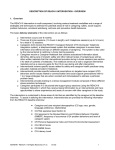
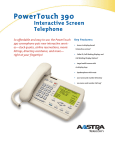
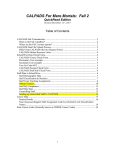
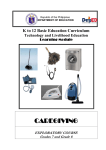
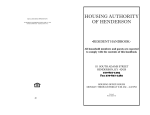
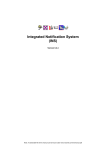
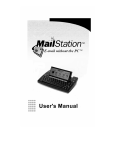
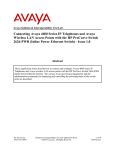
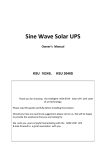

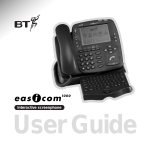

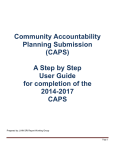


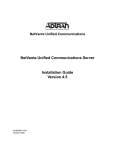
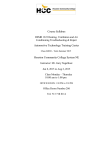
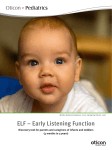
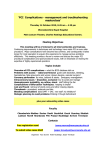
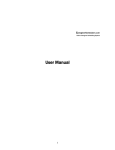
![ATP [ADAPTIVE TRAINING PISTOL]](http://vs1.manualzilla.com/store/data/005720818_1-b7f6edc22efccf3f89f6755e5b5913c9-150x150.png)
